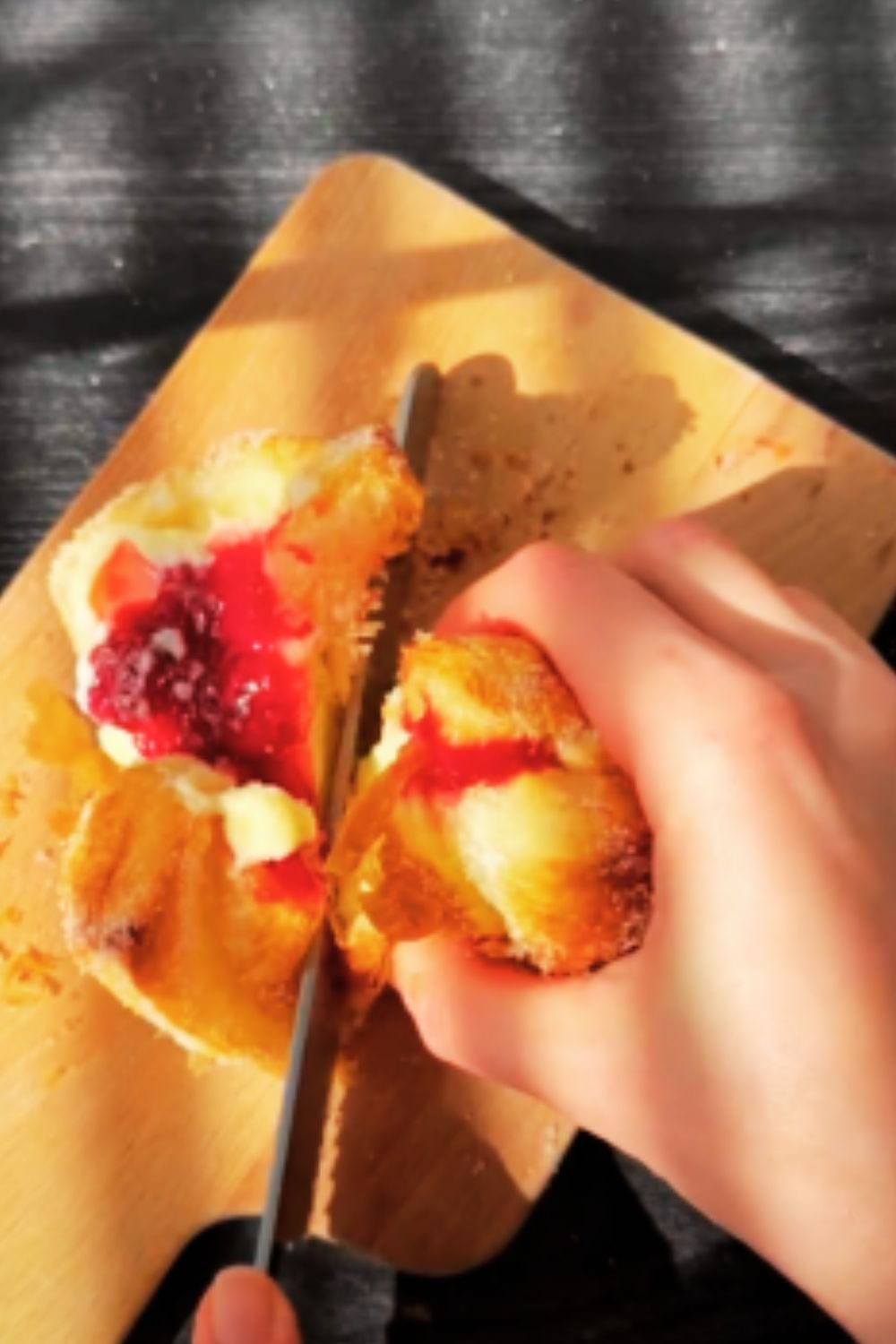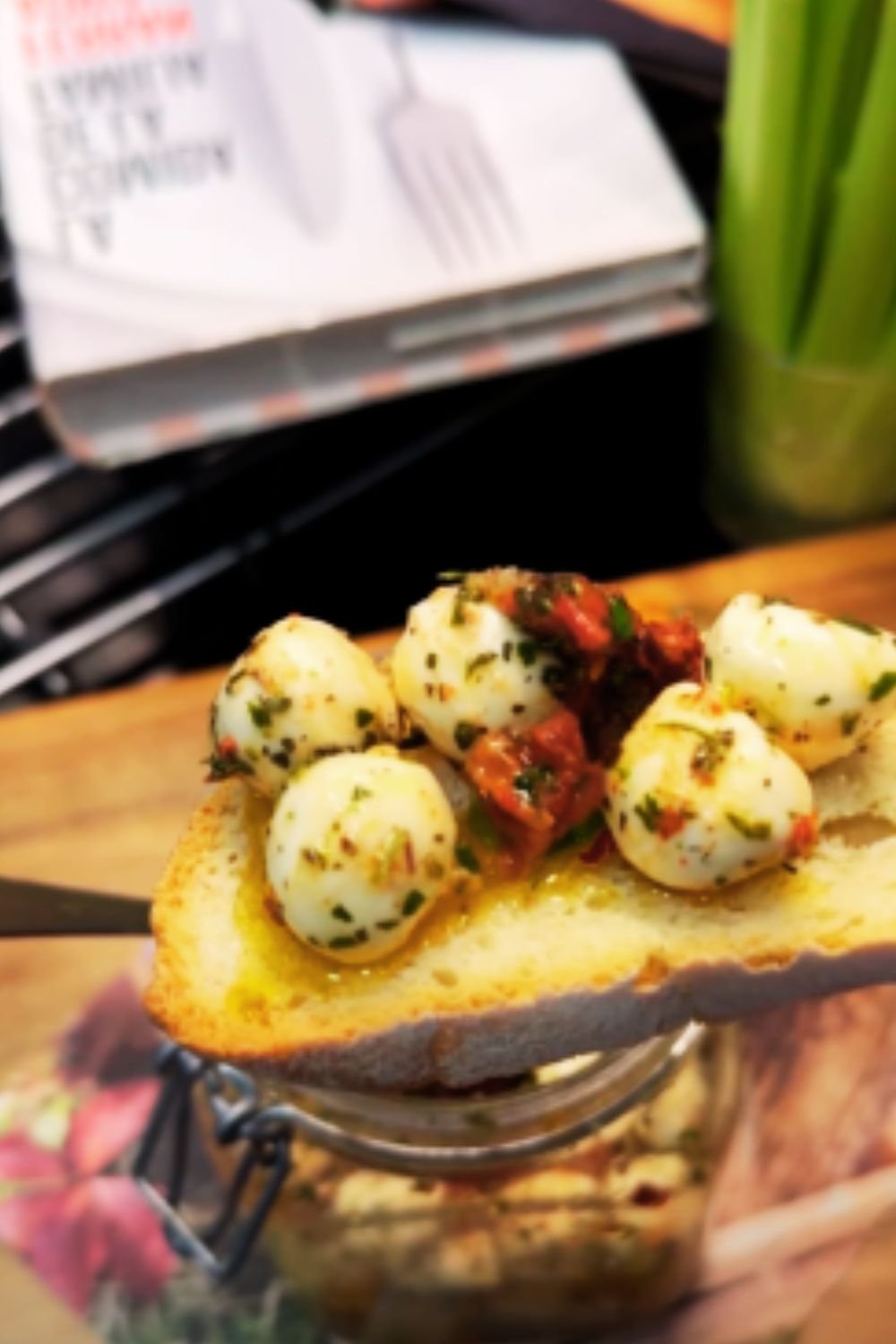There’s something about a warm, freshly baked sausage roll that instantly transports me back to my grandmother’s kitchen. The aroma of buttery pastry mingling with savory sausage meat is enough to make anyone’s mouth water. Today, I’m sharing my perfected recipe for traditional British sausage rolls that feature an impossibly flaky puff pastry exterior and a well-seasoned sausage filling. Whether you’re hosting a party, preparing a picnic, or simply craving a comforting snack, these sausage rolls are guaranteed to impress.
A Brief History of the British Sausage Roll
Before diving into the recipe, I think it’s worth appreciating the rich history behind this beloved British staple. Sausage rolls have been part of British culinary heritage since the early 19th century, though some food historians suggest their origins might date back even further. Initially sold by street vendors as a convenient, portable meal for workers, these savory pastries quickly became a national favorite.
The simple combination of flavorful sausage meat wrapped in flaky pastry transcended class divisions, appearing at both working-class lunch counters and high-society tea parties. Today, you’ll find sausage rolls everywhere in Britain – from gas stations to high-end bakeries, proving their enduring popularity.
I’ve spent years perfecting my recipe, drawing inspiration from traditional methods while incorporating small touches that elevate the humble sausage roll to something truly special.
What Makes a Perfect Sausage Roll?
In my opinion, the perfect sausage roll balances several key elements:
- Pastry texture: The exterior should be shatteringly crisp and flaky, with distinct buttery layers
- Filling consistency: The sausage meat should remain moist and tender, not dry or crumbly
- Seasoning balance: The filling needs proper seasoning with herbs and spices to complement but not overpower the natural pork flavor
- Size and proportion: The ratio of pastry to filling is crucial – too much of either throws off the balance
I’ve experimented with countless variations over the years, and the recipe I’m sharing today hits all these marks perfectly. Let’s get into the details.
Ingredients: Quality Matters
For the Pastry
I’ll be honest – while I admire those who make puff pastry from scratch, I’ve found that a high-quality store-bought all-butter puff pastry gives excellent results with significantly less effort. Here’s what you’ll need:
- 2 sheets all-butter puff pastry (approximately 320g or 11oz each)
- 1 large egg, beaten (for egg wash)
- 1 tablespoon water
- 1 teaspoon sesame seeds or poppy seeds (optional)
For the Sausage Filling
The filling is where you can really make these sausage rolls shine:
- 500g (1.1 lbs) high-quality pork sausage meat (about 80-85% lean)
- 100g (3.5 oz) fresh breadcrumbs
- 1 medium onion, very finely diced
- 2 cloves garlic, minced
- 2 tablespoons fresh sage, finely chopped
- 1 tablespoon fresh thyme leaves
- 1 tablespoon fresh parsley, finely chopped
- 1 teaspoon Worcestershire sauce
- ½ teaspoon ground nutmeg
- ½ teaspoon ground white pepper
- ¾ teaspoon salt (adjust according to how salty your sausage meat is)
- Zest of half a lemon (optional but recommended)

Essential Equipment
Before starting, gather these tools:
- Large mixing bowl
- Baking sheets
- Parchment paper
- Sharp knife or pastry wheel
- Pastry brush
- Wire cooling rack
- Food processor (optional, for breadcrumbs)
Step-by-Step Preparation Method
Preparing the Filling
- If your sausage meat comes in casings, remove them by slicing along the length of each sausage and peeling away the casing.
- Place the sausage meat in a large bowl.
- Prepare the breadcrumbs if making from scratch: tear day-old bread into pieces and pulse in a food processor until you have fine crumbs.
- Finely dice the onion – the pieces should be very small to ensure even distribution throughout the filling.
- Mince the garlic cloves until they form a paste.
- Finely chop all fresh herbs.
- Add breadcrumbs, onion, garlic, herbs, Worcestershire sauce, nutmeg, white pepper, salt, and lemon zest (if using) to the bowl with the sausage meat.
- Using clean hands, mix everything thoroughly but gently – overmixing can make the filling tough.
- Cover the bowl and refrigerate for at least 30 minutes to allow flavors to meld (or up to overnight for even better flavor development).
Preparing the Pastry
- Remove the puff pastry from the refrigerator about 10-15 minutes before using – it should be cool but pliable.
- Prepare your egg wash by beating the egg with 1 tablespoon of water.
- Line two baking sheets with parchment paper.
- Preheat your oven to 200°C (400°F).
Assembly Process
- Unfold the first sheet of puff pastry onto a lightly floured surface and roll it gently to smooth out any creases.
- Cut the sheet in half lengthwise to create two long rectangles.
- Divide half of your sausage filling into two equal portions.
- Form each portion into a long log shape, approximately 2.5cm (1 inch) in diameter, and place it along the center of each pastry rectangle.
- Brush one long edge of each pastry rectangle with egg wash.
- Fold the opposite edge over the sausage filling to meet the egg-washed edge, creating a long tube.
- Press gently to seal, then use a fork to crimp the edges for a decorative finish and more secure seal.
- Repeat with the second pastry sheet and remaining filling.
- Using a sharp knife, cut each long roll into pieces about 6-7cm (2.5-3 inches) long.
- Transfer the sausage rolls to the prepared baking sheets, leaving about 2.5cm (1 inch) between each.
- Brush the tops and sides of each roll with egg wash.
- If desired, sprinkle with sesame or poppy seeds.
- Using a sharp knife, make two small slits in the top of each roll to allow steam to escape during baking.

Baking to Perfection
- Place the baking sheets in the preheated oven.
- Bake for 25-30 minutes, rotating the sheets halfway through baking time.
- The sausage rolls are done when the pastry is deeply golden and puffed, and the filling reaches an internal temperature of 74°C (165°F).
- Transfer to a wire rack to cool for 5-10 minutes before serving.
Common Pitfalls and How to Avoid Them
Throughout my sausage roll-making journey, I’ve encountered several challenges. Here’s how to avoid the most common issues:
Soggy Bottom Syndrome
Nothing ruins a sausage roll faster than soggy pastry. Here’s how to prevent it:
- Make sure your filling isn’t too wet – drain any excess liquid from your ingredients
- Allow the assembled rolls to chill in the refrigerator for 15-20 minutes before baking
- Use a properly preheated oven (a thermal oven thermometer can help verify your oven’s actual temperature)
- Bake on a lower rack in the oven
- Consider blind-baking the bottom of the pastry for 5 minutes before adding filling for extra insurance
Filling Explosions
When the filling bursts through the pastry during baking, it not only looks messy but can lead to dry sausage meat. Prevent this by:
- Not overstuffing your pastry
- Making those small steam vents in the top of each roll
- Ensuring your edges are well-sealed
- Chilling the assembled rolls before baking
Uneven Browning
For picture-perfect sausage rolls with even golden color:
- Ensure your oven heats evenly (use an oven thermometer to check)
- Rotate your baking sheets halfway through cooking
- Apply egg wash evenly to all exposed pastry surfaces
- Consider using a convection setting if your oven has one
Variations to Try
While I love traditional sausage rolls, experimentation has led to some delicious variations:
Breakfast Sausage Rolls
Add 1 teaspoon maple syrup to the filling and include 2 tablespoons of finely diced apple. Sprinkle the tops with a mix of sugar and cinnamon before baking.
Spicy Chorizo-Inspired Rolls
Replace half the sausage meat with chorizo meat (removed from casings), add 1 teaspoon smoked paprika, ½ teaspoon cayenne pepper, and a handful of finely diced roasted red peppers.
Herb Garden Rolls
Double the herbs in the recipe and add 2 tablespoons of finely chopped chives and 1 tablespoon of fresh rosemary for an aromatic variation.
Cheese and Onion Rolls
Add 100g (3.5 oz) of grated mature cheddar to the filling and increase the onion by 50%. Sprinkle some cheese on top before baking for extra indulgence.
Serving Suggestions
Sausage rolls are versatile and can be enjoyed in numerous ways:
- Serve hot as an appetizer with a small pot of English mustard or chutney
- Pack cold for picnics or lunch boxes with a side of pickled onions
- Create a light meal by pairing with a fresh green salad dressed with vinaigrette
- Offer as part of a traditional British afternoon tea alongside savory sandwiches and sweet treats
- Serve with baked beans for a satisfying children’s meal
- Include on a holiday buffet table alongside other finger foods
Storage and Reheating Guidelines
One of the beautiful things about sausage rolls is their flexibility for make-ahead preparation. Here’s how to store and reheat them properly:
Storage Options
| Storage Method | Duration | Preparation | Notes |
|---|---|---|---|
| Room Temperature | Up to 4 hours | Cover loosely | Best for serving at parties |
| Refrigerator | Up to 3 days | Store in airtight container | Allow to cool completely first |
| Freezer (unbaked) | Up to 3 months | Flash-freeze on baking sheet, then transfer to freezer bags | No need to thaw before baking; add 5-10 minutes to baking time |
| Freezer (baked) | Up to 2 months | Cool completely, wrap individually, then store in freezer bags | Best reheated in oven rather than microwave |
Reheating for Best Results
For the crispiest results when reheating:
- Preheat oven to 180°C (350°F)
- Place refrigerated or frozen (thawed) sausage rolls on a baking sheet
- Bake for 10-15 minutes until heated through and crisp
- Allow to rest for 2-3 minutes before serving
Microwave reheating is possible but will result in softer pastry:
- Wrap each sausage roll in a paper towel
- Microwave on 50% power for 1-2 minutes until heated through
- For a compromise, microwave until just warm then finish in a toaster oven
Nutritional Information
While sausage rolls are certainly an indulgence, it’s helpful to know what you’re consuming. Here’s an approximate nutritional breakdown per standard-sized sausage roll (about 85g or 3oz):
| Nutrient | Amount | % Daily Value* |
|---|---|---|
| Calories | 320 | 16% |
| Total Fat | 23g | 30% |
| Saturated Fat | 12g | 60% |
| Cholesterol | 55mg | 18% |
| Sodium | 480mg | 21% |
| Total Carbohydrates | 22g | 8% |
| Dietary Fiber | 1g | 4% |
| Sugars | 1g | 2% |
| Protein | 9g | 18% |
*Based on a 2,000 calorie diet
Healthier Adaptations
If you’re watching your diet but still want to enjoy sausage rolls, consider these modifications:
- Use lean turkey or chicken sausage meat instead of pork
- Increase the vegetable content by adding finely grated carrot or zucchini to the filling
- Try whole wheat puff pastry for added fiber
- Make mini rolls to help with portion control
- Use an air fryer if available – this typically reduces fat content while maintaining crispness

Frequently Asked Questions
Q: Can I make these sausage rolls ahead of time for a party?
Absolutely! You have several options. You can prepare the filling up to 48 hours in advance and keep it refrigerated. Alternatively, assemble the rolls completely, refrigerate them unbaked for up to 24 hours, then bake just before your event. For longer storage, freeze the assembled but unbaked rolls, then bake directly from frozen, adding about 10 minutes to the baking time.
Q: What’s the best type of sausage to use for authentic British sausage rolls?
For truly authentic British sausage rolls, look for high-quality Cumberland or Lincolnshire sausages, which have a balanced herb and pepper flavor. If these aren’t available, any high-quality pork sausage with around 80-85% meat content will work well. Avoid low-fat sausages, as the fat helps keep the filling moist.
Q: My pastry isn’t rising properly. What am I doing wrong?
Several factors can affect pastry rise. Make sure your oven is properly preheated before baking. Keep the pastry cold until just before assembly – warm pastry won’t rise as well. Be careful not to roll the pastry too thin, and don’t press down firmly when crimping the edges, as this can prevent the layers from separating properly.
Q: Can I use homemade puff pastry instead of store-bought?
Yes, homemade puff pastry can be fantastic if you have the time and skill to make it. Traditional puff pastry requires a lengthy folding and chilling process, while rough puff pastry is a quicker alternative that still provides good results. Just ensure your homemade pastry is rolled to a similar thickness as store-bought (about 3-4mm or ⅛ inch).
Q: How can I tell when the sausage rolls are fully cooked?
The most reliable method is to use an instant-read thermometer inserted into the center of the filling – it should read at least 74°C (165°F). Visually, the pastry should be golden brown and puffed, and if you break one open, the meat should be fully cooked with no pink remaining.
Q: My sausage rolls are leaking filling during baking. How can I prevent this?
Leakage usually happens when the seams aren’t properly sealed or when steam builds up with nowhere to escape. Make sure to crimp the edges firmly with a fork and create those small vent slits in the top of each roll. Chilling the assembled rolls for 15-20 minutes before baking can also help prevent leakage.
Q: Can I add vegetables to the filling?
Yes! Finely grated or minced vegetables work well in sausage roll filling. Onions, carrots, celery, and bell peppers are popular additions. Just make sure to cook and drain vegetables with high water content (like mushrooms or zucchini) before adding them to prevent soggy pastry.
Final Thoughts
There’s something wonderfully comforting about a well-made sausage roll. The contrast between the crisp, buttery pastry and the savory, herb-infused filling creates a perfect bite that’s equally at home at an elegant party or as a quick snack with a cup of tea.
I hope this guide inspires you to create your own batch of these British classics. While they may seem simple, the attention to detail – from proper ingredient selection to careful assembly and baking – makes all the difference between an ordinary sausage roll and an extraordinary one.
Remember, the beauty of cooking lies in making recipes your own. Feel free to experiment with different herb combinations, meats, or even vegetarian fillings once you’ve mastered the basic technique. Whatever variations you try, I’d love to hear how your sausage rolls turn out!
Happy baking!


